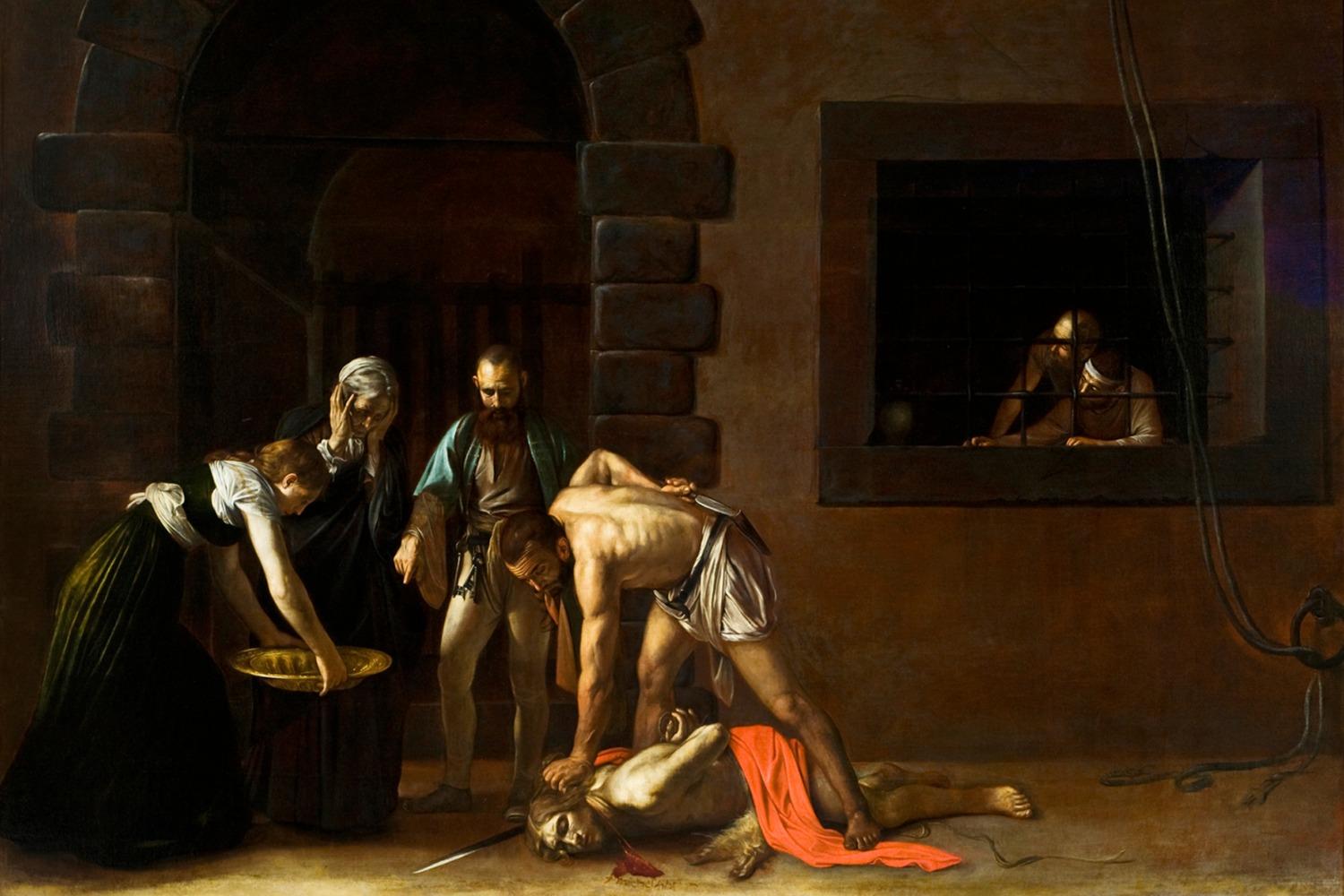
Saint John's Co-Cathedral in the Maltese capital of Valletta is dedicated to St. John the Baptist and is known for its ornate, gold-laden interior. Yet within the famously decorated Cathedral, in the Oratory chapel of the Knights of Malta, is housed a masterpiece known precisely for its stark display. Caravaggio's The Beheading of Saint John the Baptist (1608) serves as the chapel's altarpiece and is famed for being both the artist's only known signed work (his signature can be found in the blood pouring from the Baptist's neck) and the artist's largest work (at 12.5 by nearly 17 feet).
First, a word on Caravaggio. Michelangelo Merisi da Caravaggio was born in Milan in 1571 and spent the several years preceding his 1610 death living in Naples, Sicily, and Malta. Nevertheless, he is most often associated with the city of Rome, where he spent most of his artistic career. Among his most famous works are included The Calling of Saint Matthew (1600), The Crucifixion of Saint Peter (1601), and Conversion on the Way to Damascus (1601). His works are notably marked by chiaroscuro, utilizing stark contrasts between dark and light to highlight and bring to life specific aspects of the work.
Perhaps more impressive than being the largest and only known signed work of such a famous artist is what The Beheading of Saint John the Baptist conveys through intentional omission. Unlike many religious works of art, this work offers no sense of the transcendent or the holy. Any deeper Christian truths held within the scene are left to the Christian imagination.
Precious in the eyes of the Lord is the death of his faithful, but to the eyes of the world the execution of the Baptist was simply a sudden yet inevitable beheading.
St. John the Baptist - the last and greatest of the Jewish prophetic tradition and the long-foretold Forerunner of the Messiah - lies lifeless, the act of beheading only just incomplete. The executioner prepares to finish his task unceremoniously as another official gestures to the platter Salome lowers to receive the head. Two prisoners watch, surprisingly unaffected, from their shared cell. Only the remaining bystander appears to be moved by the scene, clasping her head in her hands as she watches the execution unfold.
No divine light invades the scene. No angel looks out knowingly from the painting. No hint of triumph reminds the viewer of the event's yearly liturgical commemoration. Where a halo would normally hang is found only the executioner's hand, gripping the Baptist's hair to complete Herod's order. Only when the altarpiece is framed by the elevation of the Host from the altar below is it cleary touched by the transcendent - a view that itself demands Christian eyes to see.
Precious in the eyes of the Lord is the death of his faithful, but to the eyes of the world the execution of the Baptist was simply a sudden yet inevitable beheading. To the eyes of the world, the death of the Baptist's Lord - the Crux Mundi - would be yet another dispatching of a dissident in a backwater jurisdiction. To Christian eyes, however, these events shaped civilizations and beyond - and that is what Caravaggio invites us to see.

The First Draught
To receive the Weekly Update in your inbox every week, along with our weekly Lectio Brevis providing insights into upcoming Mass readings, subscribe to The First Draught.